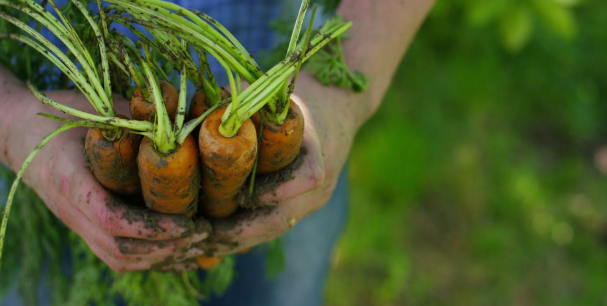With around 80% of the American population living in cities, it is small wonder that an increasing number of people, especially the young, are becoming disconnected from natural areas like forests. This results in the people not being able to realize how important trees are to our existence and the many benefits they provide. Apart from aesthetic and recreational benefits, trees, especially trees in urban spaces provide shade, reduce pollution and storm-water runoff, as well as provide shade and keep the temperature down. Urban planners will tell you that with properly placed trees, you can reduce heating and cooling costs of homes and offices by as much as 20% on an average by the time the tree achieves full growth, i.e. 10-15 years after planting.
The problem of growing and sustaining healthy trees in towns and cities is that the environment is extremely harsh and nowhere close to a tree’s normal growing conditions. Since many of the symptoms of poor tree health take a long time to appear, it is even more important that proper care is taken of them to ensure that they are healthy and live for a longer time. A few important steps to follow for maintaining tree health:
Understand What Your Trees Need
Trees have different needs regarding the growing conditions like climate, soil, and moisture requirements. For optimum growth, the tree should be planted in the right place so that it can take advantage of the light and soil conditions to flourish. If you don’t know the type of the tree, you can refer to https://www.arborday.org for a proper identification that can help you to know what the requirements are. Sometimes a tree that is not growing properly at one place can flourish when shifted to another one that is more suited to its growth. While one tends to think that trees are self-sufficient, many trees are not drought-tolerant so they may require supplemental watering during an extended period of dry weather. Much other sensitivity prevent trees from growing properly such as too much water, high winds, root competition, and salt spray; so it is very important to understand what a particular tree needs and avoid exposing them to these stressors.
Protect the Roots of the Trees
Health growth of trees is only possible when their roots are healthy. For soil to provide a healthy environment, it needs to have sufficient air space within. When the soil is compacted, it can prevent both oxygen and water from infiltrating to the root zone. For best results, you should focus on protecting the soil and the roots that lie within the critical root zone (CZR) of the tree. This zone is generally defined to be the area within an imaginary circle on the ground up to where the tree’s branches extend. Even though the roots of the tree extend much further than the CZR, it is within the area that they are most vulnerable to disturbance posed by soil compaction of change of soil grade.
Prune as Required
Trees should not be left to grow as they please, especially in an urban environment as they can interfere with buildings or power lines. Pruning mature trees is essential and is best done by experts who know how to spot problem areas. Branches that rub against each other should also be pruned; the rule is to remove the smaller branch while allowing the bigger one to remain. Dead branches can break off irregularly and allow the growth of fungus that degrades the quality and life of the tree. Low hanging branches are dangerous to vehicles and pruning them also improves aesthetics. If you are on the lookout for a professional tree pruning service provider, then visit www.chomperstreeservice.com.
Protect the Bark of the Tree
The bark of the tree serves a vital function in protecting it from bacterial and fungal attacks. In the urban environment, common sources of bark damage include rotary spray heads that keep on spraying water at the same place on the trunk of the tree. A simple step like redirecting the spray head so that the water does not stream directly onto the trunk can take care of the problem. Branches rubbing against each other can also cause bark damage and can be set right easily by pruning. Ensure that the carriage or the blades of the lawnmower does not hit the trunk of the tree. Even vehicles can damage trees near roads and driveways, especially when the lower limbs are hit by tall trucks. Trimming the lower branches and fixing small reflectors to the tree trunks can help to avoid the problem of vehicular damage.
Water as Required
Trees that have reached maturity are fairly stable in the existing moisture and soil conditions; however, they can still be negatively impacted by extreme weather like floods or droughts. The extent to which the tree can withstand the rigors of the weather depends on the species, local climate, soil conditions, and its overall health. A focus on promoting tree health during normal conditions will make them more resilient to adverse conditions. During winter, trees do not need extra watering; however, irrigation may be necessary if the weather is really dry. Trees benefit better by deep watering instead of frequent misting that is better for garden flowering plants.
Maintain Healthy Soil Conditions
In the forest, trees thrive because the soil is constantly renewed and enriched with decaying organic matter that provides the required nutrition. Water infiltration is also aided by the leafy layer retaining the moisture better. However, in the home environment, since these conditions are not present naturally, you can mimic the process by using mulch created from fallen leaves or purchased. The mulch should be spread around the tree taking care to keep the trunk and the root-flare free. Growing plants that tolerate shade well under mature trees not only look more attractive but helps to maintain a healthy soil environment.
Conclusion
Maintaining the health of trees in an urban environment can be very challenging, however, given the multiple and long-ranging benefits of trees, we must rise to overcome the obstacles and ensure that our town and cities have the green cover that is conducive to healthy living. Understanding the nature of the problems that trees face is the key to the process, the rest is just the application of common sense and some grunt work.










